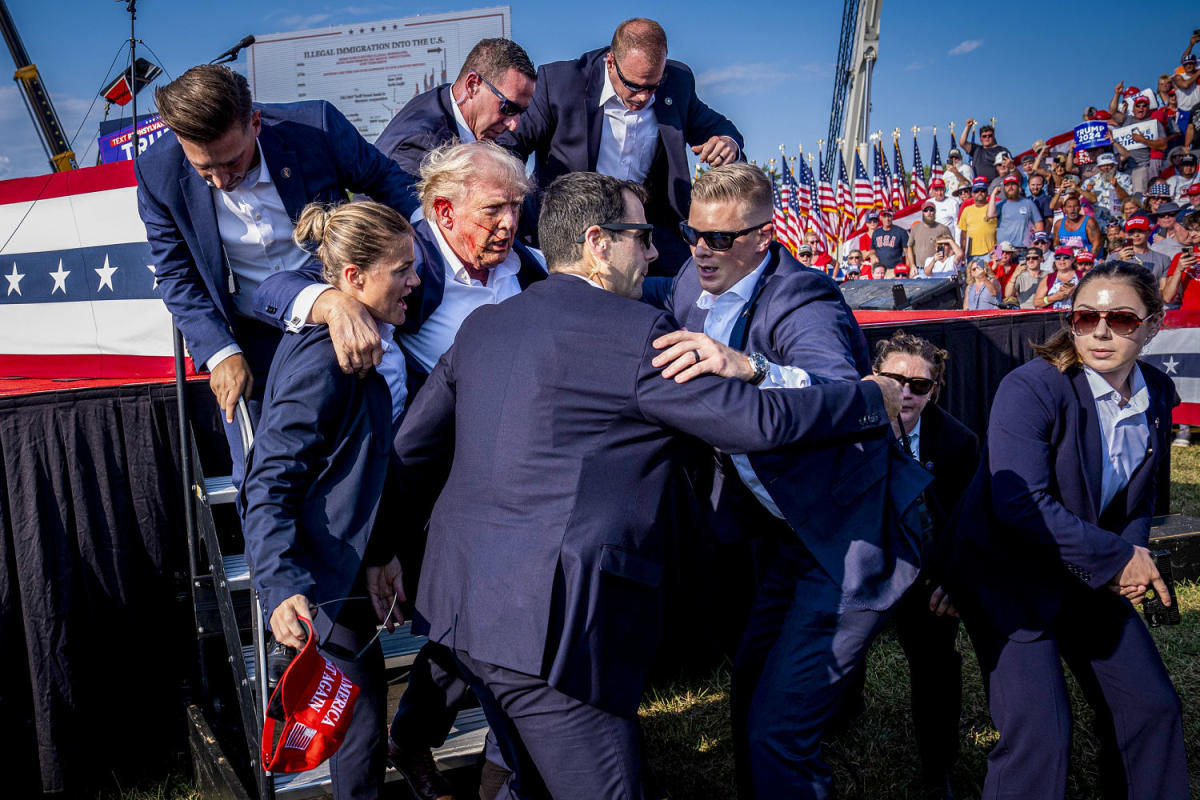An independent, bipartisan review identified “numerous mistakes” by the U.S. Secret Service and “specific failures and failures” that enabled the assassination attempt that wounded former President Donald Trump in Butler, Pennsylvania, in July.
The panel, made up of four former senior law enforcement and government officials, also warned of another catastrophic security failure if the Secret Service does not immediately implement “fundamental reforms.”
“The Secret Service has become bureaucratic, complacent and static,” the panel wrote in a letter to Homeland Security Secretary Alejandro Mayorkas, who oversees the organization.
“The Secret Service as an agency needs fundamental reforms to carry out its mission,” the members added. “Without that reform, the Independent Review Panel believes another Butler can and will happen.”
The Secret Service did not immediately respond to a request for comment on the assessment. A spokesperson previously told NBC News that it had “developed a plan for a paradigm shift across the agency” to address known issues around staffing, training and use of technology.
“The increasing demands placed on the agency during this dynamic threat environment have pushed our people to their limits,” said Anthony Guglielmi, chief communications officer for the Secret Service. “We recognize that this is not sustainable, and we cannot risk another mission failure.”
The panel conducted 58 hour-plus interviews with individuals from the Secret Service, federal, state and local law enforcement agencies, and reviewed more than 7,000 documents, the report said. The panelists and staff also traveled to Butler, where they examined the assassination scene.
The group said it has identified “deep flaws in the Secret Service, including some that appear to be systemic or cultural,” including a “lack of critical thinking among Secret Service personnel” and the unwillingness of agents to “speak out to speak” about potential threats.
Long list of failures
The new report echoes much of what was previously reported about the Secret Service’s failures before and during the July 13 meeting. For example, no Secret Service personnel or other federal, state, or local law enforcement agency were specifically tasked with securing the roof of the building from which the shooter shot Trump.
Softening the sightline from the building to the stage with physical barriers, when necessary, should have been standard procedure for the Secret Service and “represents a critical security failure,” the review said.
A Trump Secret Service official did additional legwork ahead of the meeting, including a sniper advance, especially since the leader and assistant leader of Trump’s personal staffer had been briefed on intelligence “related to a long-range threat against the former president Trump by a foreigner. actor, although not specific to the Butler rally.
The Trump campaign later said that Trump had been briefed by US intelligence officials about “real and specific threats” from Iran to kill him.
Thomas Matthew Crooks’ “method of attempted assassination epitomized exactly the type of threat that intelligence warned about,” the report concluded.
In a footnote, the report notes that “the panel found some evidence that Trump campaign officials have expressed resistance to the placement of certain heavy equipment and/or vehicles at the site,” which could have been used to reduce line-of-sight risk. to limit.
The report states that it is ultimately the Secret Service’s responsibility to ensure appropriate action is taken and “escalate areas of disagreement between campaign staff and the agency to appropriate resolution.”
Two hours before the assassination attempt, Crooks was able to fly a drone at the staging area for about 11 minutes at 3:51 p.m. His drone went undetected because the Secret Service’s anti-drone system had a technical problem and was out of action for many hours. Ultimately, the system didn’t start working until more than half an hour after Crooks used the drone.
The report also details the failure of the Secret Service or local law enforcement officials to find Crooks, despite him first being identified as a suspect more than 90 minutes before he opened fire on Trump.
Crooks was first identified by a local countersniper team member who was about to leave duty. He sent a text message to other snipers warning that Crooks had sneaked into a parking lot that was off-limits and closed off by physical barriers.
Most importantly, Trump’s Secret Service leadership was never notified of any individual acting suspiciously in the crowd before the former president took the stage, or in the minutes after Crooks found himself on the roof of the building positioned and preparing to shoot.
It wasn’t until 6:09 p.m., four minutes after Trump began speaking, that a Pennsylvania state trooper stationed with the Secret Service in the security room verbally announced that Crooks was the suspicious person who had taken the stage and was now on the scene. roof of a building.
The Secret Service security room had no direct view of the rally phase and “did not have an operational Incident Command System for the centralized reporting and tracking of events and issues as they arose.”
The panel recommended a series of reforms that should be implemented as quickly as possible by the Secret Service, such as overhead surveillance for outdoor events, additional training and the creation of a central communications hub for major events. The panel also recommended involving all participating law enforcement agencies.
Perhaps most surprising was that the panel did not see a lack of funding as an underlying factor in the Secret Service’s failure. The agency’s budget has nearly doubled in the past decade, from about $1.8 billion in the 2014 budget year to more than $3 billion, government documents show.
During the same period, agency-wide headcount increased by almost 25%, with more than 8,100 employees. They include about 3,200 special agents and 1,300 uniformed officers, according to the agency’s website.
The report concludes that the agency’s failures go beyond spending. “Even an unlimited budget would not, by itself, address many of the failures of July 13,” the report said.
This article was originally published on NBCNews.com
